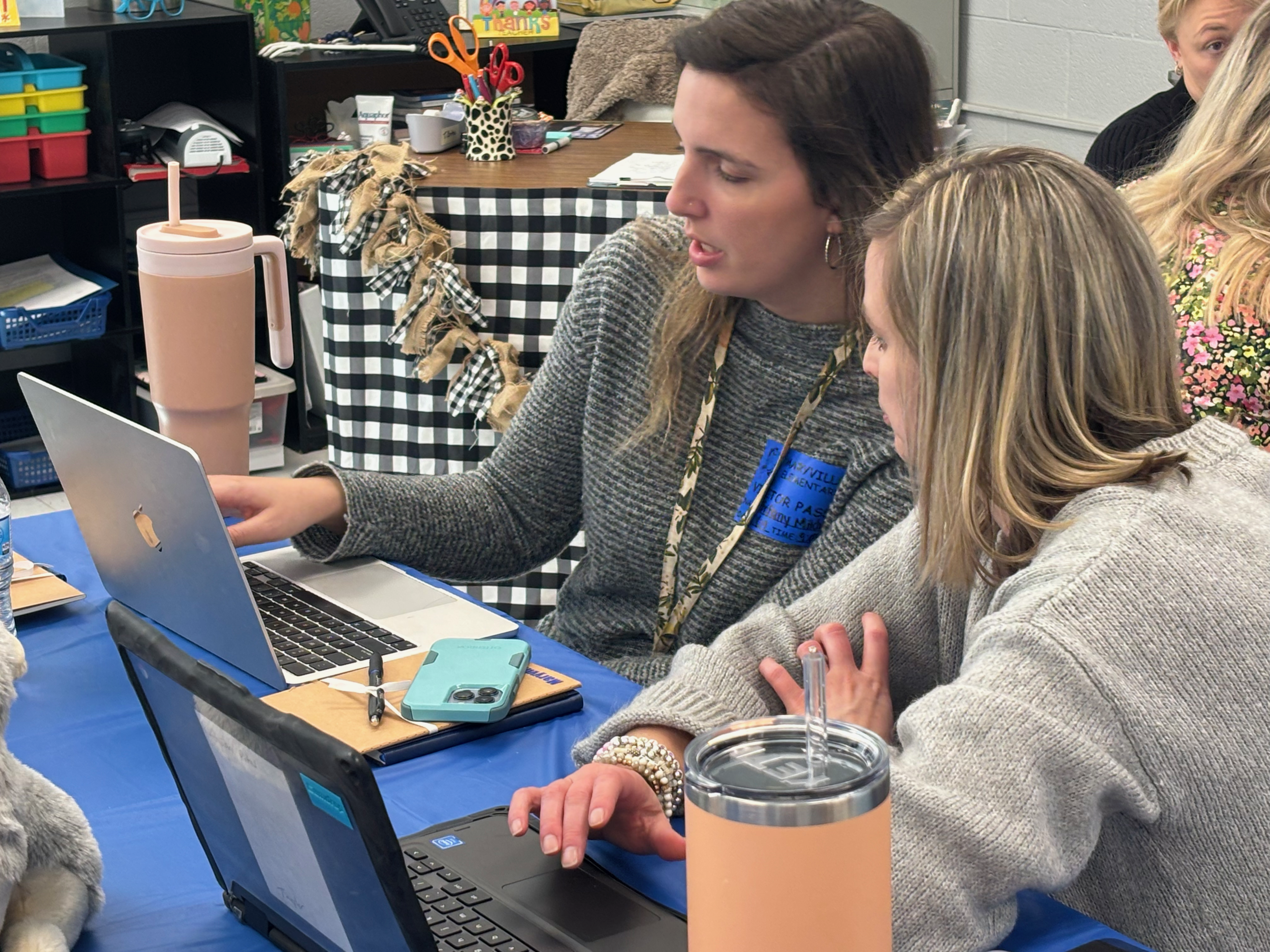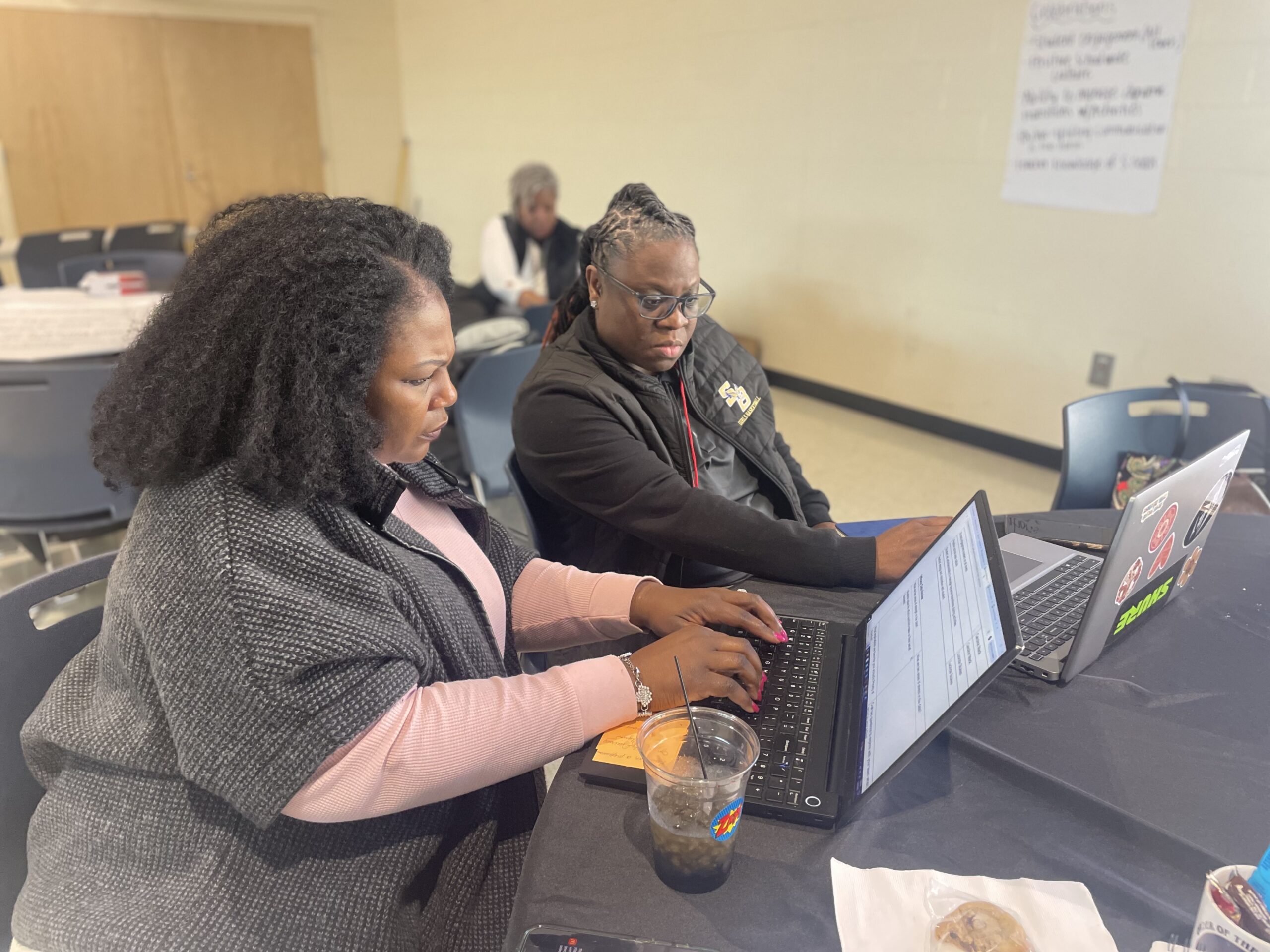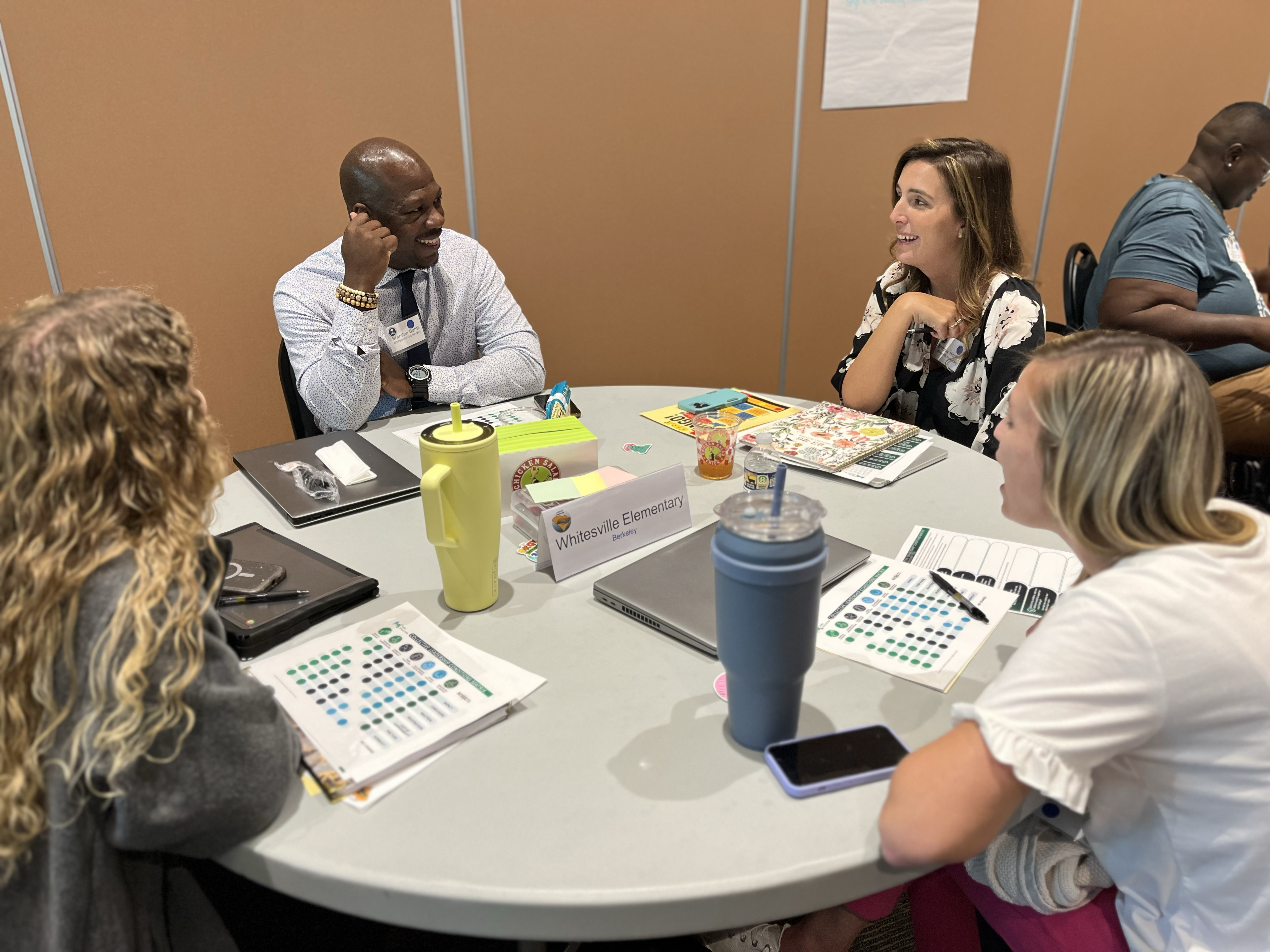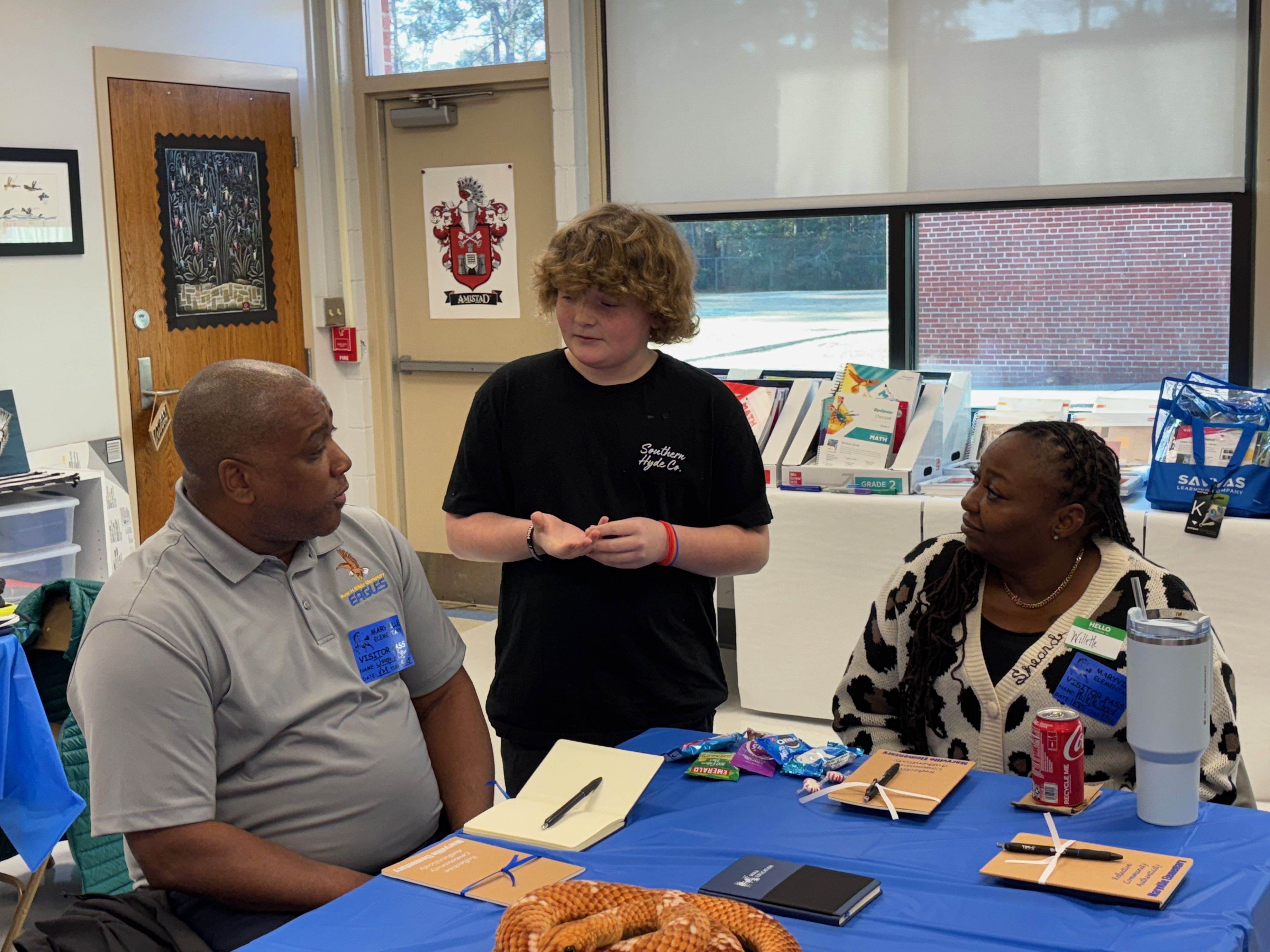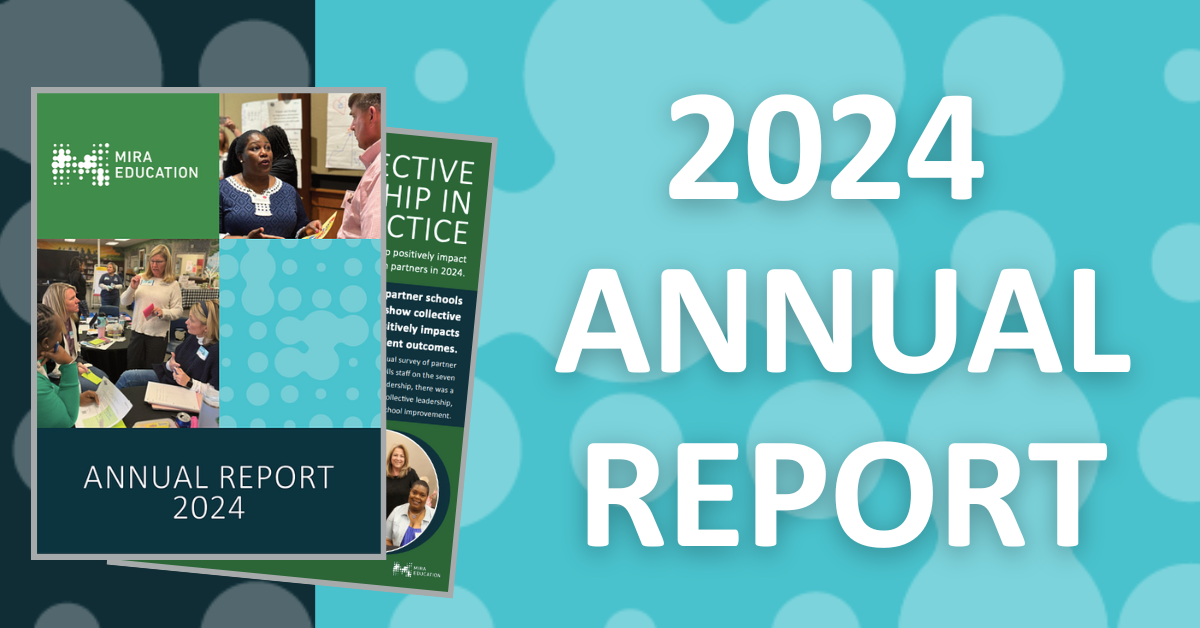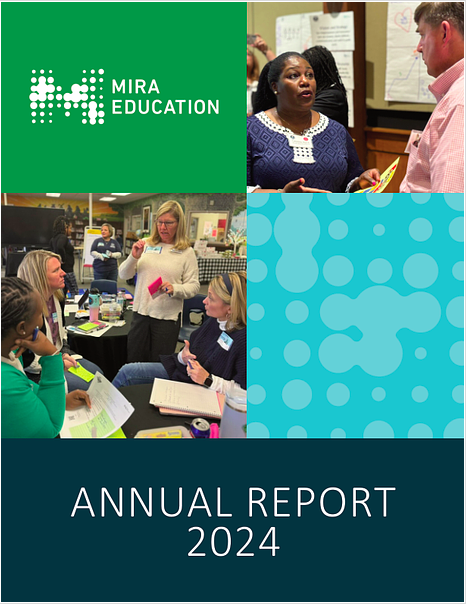Year: 2025
A Better Way to Finish Strong
How Collective Leadership Helps School Leaders Finish Strong
The month of May is a marathon, not a sprint. Testing, hiring, celebrations, and next-year planning. It’s all happening at once, and the pressure to “finish strong” is real.
But for too many leaders, “finishing strong” gets translated into “doing more,” and often doing so alone.
There’s another way.
What Collective Leadership Looks Like at the End of the Year
The work may not be easier, but leaders in these schools and districts aren’t just surviving the end of the year. Rather, they’re designing it with their teams to co-own the work and the results. Here’s what that looks like in practice:
Desiloed Decision-Making
Instead of tackling hiring, planning, and budgeting in parallel conversations, they bring the work into one shared frame. In our work with the University of Maryland School Improvement Leadership Academy, principals and assistant principals focus on competency-based professional learning to sharpen their skills in inclusive leadership practice.
“SILA provided research with practical skills to improve school systems. With the skills I developed in SILA, we were able to increase our attendance rate this year from 70.1% to 83.1%.” Allison Johnson, J.D., NBCT, Assistant Principal, Anne Arundel County Public Schools
Distributed Reflection
Every team, not just administrators or the central office, has space to look back, name what worked, and surface what needs attention.
As part of our partnership with the South Carolina Department of Education, 31 schools across 15 districts are implementing collective leadership practices to spur improvement and reflect on what their schools need to be a thriving learning community.
Centered co-ownership
When the temptation to “just get it done” kicks in, they ask: Who else could lead this? And more importantly, who is already leading, but hasn’t been named?
By coming together to view student data as a team, Scott’s Branch Middle School was able to share to increase its capacity to support each student.
“Student achievement was always the core of our work. But the problem was we were all on our own islands. …Doing the data walls helped us see a clear picture of what each child needed.”—Caroline Mack, Teacher of the Year, Scott’s Branch Middle High School
When leaders aren’t carrying the load alone, they’re part of a system that holds together, even in the toughest weeks.
Try this
End-of-year pressure can make us default to “just get it done.” But co-leadership requires us to slow down and shift the approach. Try this:
- Map out a key end-of-year task that’s currently sitting on your plate. It could be anything from finalizing budgets to planning PD or preparing graduation events.
- Identify two other team members already contributing to this task, whether actively or behind the scenes.
- Name one action you can take to share the ownership of this task with them publicly: acknowledging their role in a meeting, shifting responsibility, or asking for their input on key decisions.
The goal isn’t just to share the workload. The goal is to co-own the process and outcomes as a team.
Learn more about how schools are implementing collective leadership to drive real change.
Uncertainty ≠ Instability: 4 Key Strategies for Education Leaders to Support Staff Through Change
Change in education is constant, but uncertainty doesn’t have to lead to instability or getting stuck. Education leaders play a crucial role in navigating the unpredictable nature of school improvement, curriculum shifts, and policy changes. By focusing on what’s within your control and supporting your staff through the unknown, you can lead confidently, reduce stress, and promote a healthy, collaborative school culture.
Here are four actionable strategies to help education leaders support their teams during uncertain times and create stability in change.
1. Focus on What You Can Control: Leadership Strategies for Success
In uncertain times, it’s easy to feel overwhelmed by factors beyond your control, like changes in education policy, fluctuating budgets, or evolving state mandates. However, focusing on what you can control is the most effective way to maintain stability within your team.
You can’t control everything, but you can control your leadership approach: how you communicate, how you advocate for resources, and how you support your staff. By focusing on these areas, you can avoid burnout and build a positive, proactive school culture.
Key Takeaway:
In times of uncertainty, education leaders should focus on the leadership actions and decisions within their control. If it is not yours to do, it is not yours to worry about. This maximizes the impact you can have and fosters resilience.
2. Communicate Early and Often: Building Trust with Transparent Leadership
Effective communication is one of an education leader’s most important tools during change. Proactive communication ensures that staff members are informed, reducing confusion and anxiety about potential shifts.
Whether it’s about curriculum updates, policy changes, or school-wide initiatives, keep your team in the loop early and often. By being transparent and consistent, you prevent assumptions and encourage a culture of trust. Staff should know they can rely on you for updates and information.
Key Takeaway:
Communication is the foundation of trust. Early and frequent updates are key to keeping staff informed and reducing uncertainty during periods of change.
3. Avoid Siloed Decision-Making: Promoting Collaboration Across Teams
Siloed decision-making can lead to misalignment and frustration, especially when facing uncertain times. When teams or leaders work in isolation, it often results in confusion and resistance to change. Instead, promote collaboration across teams and departments to ensure alignment and foster a shared sense of ownership.
Involve staff in decision-making processes early on and create open channels for feedback and collaboration. This ensures decisions are made with collective input, which boosts morale and reduces the risk of misunderstandings.
Key Takeaway:
Collaboration is essential for navigating uncertainty. Break down silos by ensuring decisions are made with input from all stakeholders, aligning your efforts across teams and departments.
4. Make Small Shifts for Meaningful Improvement: Sustainable School Change
Instead of waiting for large-scale changes, focus on small, incremental shifts that will drive long-term improvement. In times of uncertainty, making steady, manageable changes is more sustainable and less disruptive.
Rather than overhauling systems or processes, make consistent adjustments that can be refined over time. Whether revising a program, testing a new strategy, or making small tweaks to daily operations, these incremental changes lead to sustainable growth.
Key Takeaway:
Sustainable change comes from small, intentional shifts. Focus on incremental improvements rather than major disruptions for more significant long-term impact.
Looking for More Resources?
Leading during uncertain times doesn’t have to be overwhelming. By focusing on what you can control, communicating effectively, promoting collaboration, and making incremental improvements, you can guide your staff through unpredictable changes confidently and clearly.
For more tools and resources on leading through school change and supporting your team during uncertainty, visit www.miraeducation.org. Our free resources can help you lead for sustainable change and build a stronger, more resilient school culture.
Removing Barriers to Impact: How Education Leaders Can Find Focus in the Chaos
Why Education Leaders Get Stuck
Education leadership is filled with competing priorities — curriculum implementation, teacher retention, student success, and operational challenges. With so much happening at once, even the best plans can stall.
Maybe a new initiative isn’t gaining traction. Maybe a curriculum shift hasn’t delivered the expected student growth. Or maybe, despite endless meetings, the same challenges persist year after year.
When this happens, it’s often not because the ideas are wrong — it’s because barriers, like follow-through, misalignment, and outside factors, prevent real progress.
The solution? Removing barriers to impact — focusing on what truly matters and clearing the path for meaningful change.
How to Remove Barriers and Gain Momentum
As a design and implementation partner, we’ve helped school and district leaders refine their vision and strategy to meet their unique needs. The key? Harnessing collective leadership, aligning expertise with goals, and identifying what’s standing in the way of progress.
Here are three powerful ways education leaders can remove barriers, focus their efforts, and drive sustainable impact:
1. Leverage Expertise: Leadership is a Team Sport
The best school and district leaders don’t try to do it all alone. Collective leadership ensures that the right people are making decisions in their areas of expertise. When teams collaborate effectively, they remove roadblocks that slow down progress.
Action Step: Identify key strengths within your team. Who can take the lead in specific areas? How can you build leadership capacity across your school or district?
2. Step Back & Reflect: Use Data to Identify Roadblocks
Great education leaders don’t just collect data — they use it to pinpoint barriers and adjust strategies. Reflection isn’t just about checking progress; it’s about identifying what’s holding your team back.
Action Step: Schedule a data-driven reflection session with your team. Use both qualitative and quantitative data to assess progress, celebrate small wins, and adjust your school improvement plan accordingly. Download this tool to guide your session.
3. Turn Reflection into Action: Remove What No Longer Works
Reflection without action leads to frustration. The most effective education leaders take insights and turn them into concrete next steps—especially when it means eliminating outdated practices.
Action Step: After every strategy session, define one priority, assign ownership, and set a clear timeline for action. Removing unnecessary tasks and refining focus helps teams gain momentum. Download this tool to help you sort through initiatives and tasks to refine or remove.
Removing Barriers to Impact: A Mindset Shift for Education Leaders
Progress doesn’t come from doing more — it comes from focusing on what truly moves the needle. By stepping back, leveraging your team, and committing to actionable school leadership strategies, you can clear obstacles and create lasting change.
Feeling stuck? Let’s remove the barriers to impact together. Connect with Mira Education to build momentum and implement high-impact, sustainable school improvement solutions.
The Power of School Learning Labs
Observing Collective Leadership in Practice
How do schools make meaningful, sustainable change?
It’s a question educators ask themselves every school year.
In our work with partners, we’ve learned that big, innovative ideas do not always shake up a system. It’s the small shifts in practice that lead to sustainable school improvement.
Over the last seven years, Mira Education has partnered with the South Carolina Department of Education (SCDE) to support schools in making small shifts for significant impact through a collective leadership approach.
Collective leadership is a research-based approach that harnesses the expertise of each team member to multiply leadership capacity and bring more perspectives into the decision-making process.
Collective Leadership Initiative
The Collective Leadership Initiative (CLI) was established in 2018, and 64 schools have participated in this partnership between Mira Education and the SCDE. As part of CLI, school teams across South Carolina come together to identify a Priority of Practice (PoP) for their schools. The PoP is a growth area for school teams will focus on for two years. Teams identify the actions needed to address their PoP and plan for small, sustainable shifts in their collective practice. To ensure there are a variety of perspectives and expertise at the table, CLI teams are comprised of educators across roles – administrators, teachers, and support staff.
But what does collective leadership look like in practice?
Learning Labs
To support teams in answering this question and to offer inspiration for shared work, CLI schools participate in learning labs. Learning labs are school visits to other CLI schools to obserce the impact of collective leadership in classrooms in real time.
Recently, Mira Education and SCDE co-facilitated four learning labs at Blythewood High School, Horse Creek Academy, J.C. Lynch Elementary School, and Maryville Elementary School. While each host campus had its own style, all participants observed classrooms, heard from staff and students, and asked questions about the host campus’ collective leadership practice.
Additionally, each school team examined its efficacy survey data. The efficacy survey is an anonymous survey administered by CLI that measures the degree to which teachers believe they impact one another and student learning.
This data-reflection is part of the CLI planning process. Schools will come together again later this month to adjust their approach and identify potential shifts to their PoP to better support their team.
Learning labs effectively allow educators to see collective leadership in practice. They help the theoretical approaches learned in CLI become tangible and, more importantly, actionable.
For support identifying a Priority of Practice and to learn more about applying a collective leadership lens to your work, email info@miraeducation.org.
2024 Annual Report
As 2025 begins, the Mira Education team is inspired by the work accomplished in 2024 and encouraged by what’s to come. Read the 2024 Annual Report to see how collective leadership positively impacted students, schools, and districts in our work with partners.
